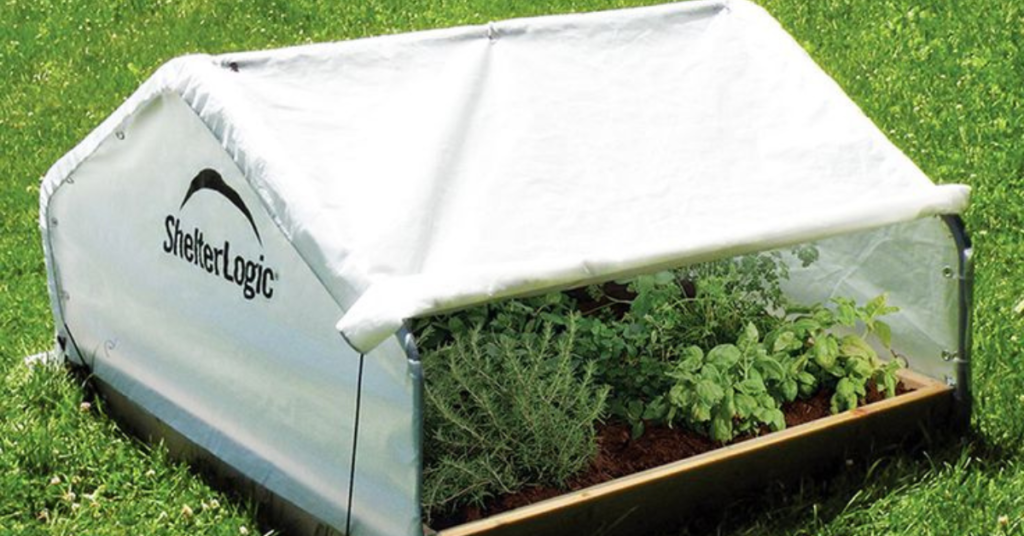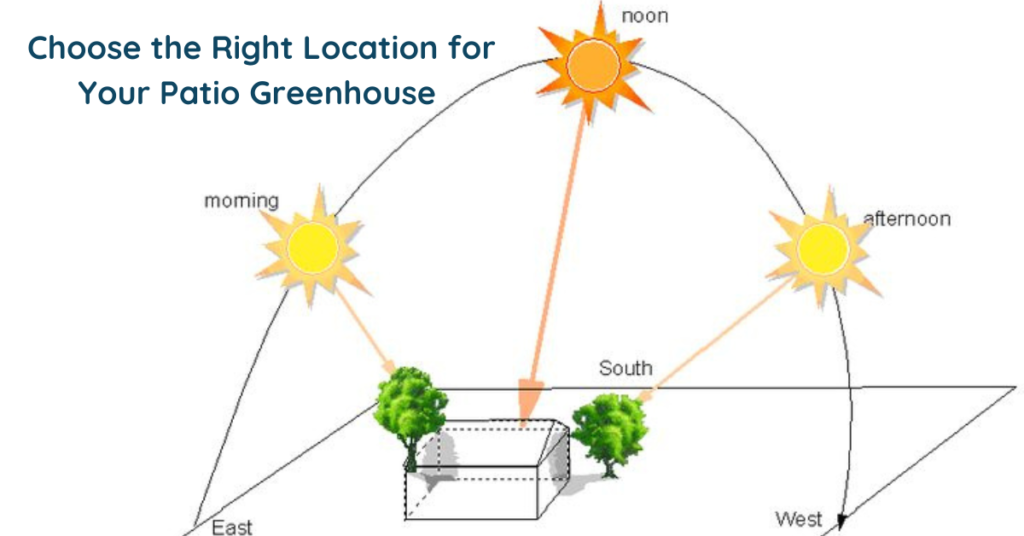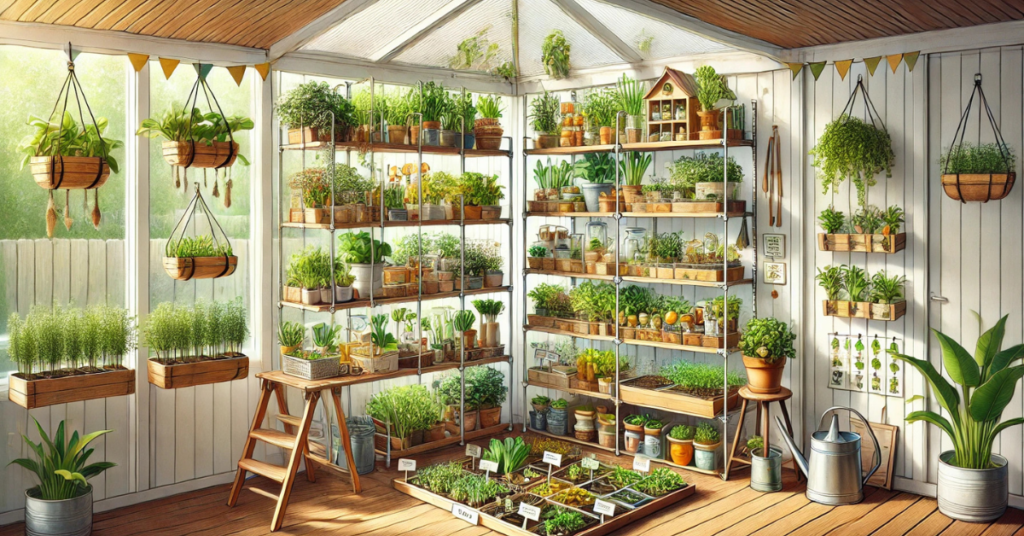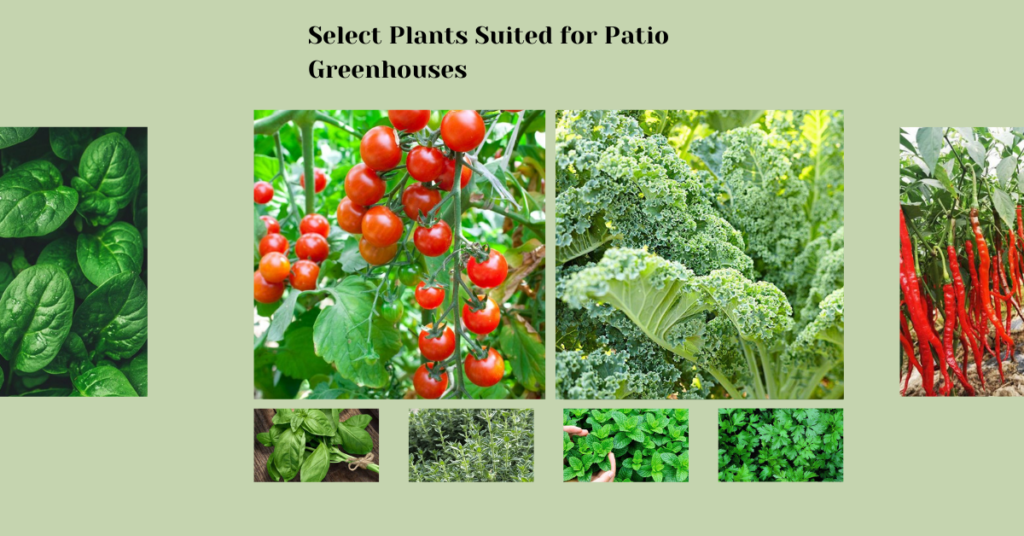Introduction:
If you’re an avid gardener or just starting, patio greenhouses are a game-changer. Compact yet efficient, these structures allow you to grow plants year-round, regardless of the weather. But how do you make the most of your patio greenhouse? This guide will provide you with essential tips for patio greenhouses, from setup to maintenance, to help you nurture your green thumb and enjoy a thriving garden right at home.

Table of Contents
1. Choose the Right Location for Your Patio Greenhouse
The placement of your patio greenhouse is one of the most critical factors for its success. Plants need sunlight, so choose a location that receives as much natural light as possible, preferably six to eight hours a day. South-facing patios are often the best option for maximum exposure to sunlight.

If your patio is partially shaded or located in an area with limited direct sunlight, don’t worry! You can use shade-tolerant plants or invest in supplemental grow lights. These lights mimic natural sunlight and ensure your plants still thrive in low-light conditions.
Additionally, consider wind exposure. Greenhouses can be lightweight and might be affected by strong winds. To avoid damage, position your greenhouse in a sheltered area or secure it firmly to the ground.
Pro Tip: A sun tracker app can help you determine the best spot for your greenhouse by analyzing how sunlight moves across your patio.
2. Organize Your Greenhouse Space Efficiently
Space management is essential, especially if you’re working with a small patio greenhouse. To make the most of the available area:

- Use vertical gardening techniques: Install stackable shelves, hanging planters, or tiered racks to maximize space. This is particularly useful for growing herbs, microgreens, or smaller plants.
- Group plants by their needs: Keep plants with similar water, light, and temperature requirements together for easier care.
- Utilize corners: Corners are often underused but can be great spots for tools, pots, or larger plants.
- Label your plants: Labels help you track your plants’ growth and care requirements, preventing confusion.
Efficient organization not only boosts productivity but also ensures better airflow and prevents overcrowding.
Pro Tip: Consider collapsible shelves that can be adjusted as your plants grow taller. This is one of the most practical tips for patio greenhouses to ensure you use every inch wisely.
3. Select Plants Suited for Patio Greenhouses
When deciding what to grow, focus on plants that thrive in small, controlled environments. For beginners, herbs like basil, thyme, mint, and parsley are excellent choices because they grow quickly and don’t take up much space. Leafy greens such as spinach, kale, and lettuce are also easy to cultivate.

For more advanced gardeners, patio greenhouses are perfect for compact fruiting plants like cherry tomatoes, peppers, and strawberries. You can even try growing exotic plants like orchids or cacti if you’re looking for something unique.
Seasonal Suggestions:
- Spring: Start with leafy greens and herbs.
- Summer: Add small fruits and vegetables like cucumbers and cherry tomatoes.
- Autumn and Winter: Switch to cold-tolerant plants like spinach, kale, and parsley.
Hot Tip: Avoid overcrowding your greenhouse. Plants need space to grow, so plan your planting layout carefully. Selecting suitable plants is one of the most essential tips for patio greenhouses to achieve great results.
4. Control Temperature and Humidity Like a Pro
Temperature and humidity control are key factors for a successful patio greenhouse. Most plants prefer daytime temperatures between 65°F and 75°F (18°C to 24°C) and nighttime temperatures that don’t dip too low.

Greenhouses naturally retain heat, so you’ll need to prevent overheating during sunny days. Most patio greenhouses come with adjustable vents or roll-up doors that can be opened to let excess heat escape. In colder months, you may need to add a small portable heater to keep the greenhouse warm.
Humidity is another critical factor. Too much humidity can lead to mold and mildew, while too little can cause plants to dry out. Use a hygrometer to monitor the humidity levels, and mist your plants occasionally if the air is too dry.
Quick Fix: Place a bucket of water inside your greenhouse. As the water evaporates, it will naturally increase the humidity levels.
5. Master the Art of Watering
Watering can make or break your greenhouse plants. Unlike outdoor gardens, patio greenhouses don’t rely on rain, so it’s up to you to provide the right amount of water.


- Check soil moisture regularly: Use your finger or a moisture meter to determine when your plants need water.
- Water in the morning: Early watering ensures plants have enough moisture for the day and reduces the risk of fungal diseases.
- Avoid overwatering: Too much water can lead to root rot, especially in a confined greenhouse environment.
Time-Saving Hack: Install a drip irrigation system or self-watering pots. These tools provide consistent moisture without the risk of overwatering, making them one of the smartest tips for patio greenhouses for busy gardeners.
6. Fertilize and Rotate Crops for Better Yield
Greenhouse plants often grow faster than outdoor plants because of the controlled environment, but they also deplete soil nutrients quickly. Regularly fertilize your plants with organic or slow-release fertilizers to keep the soil enriched.

Crop rotation is another important practice. Growing the same plants in the same spot can lead to nutrient imbalances and soil-borne diseases. Rotate your crops seasonally to maintain soil health.
Pro Gardener’s Secret: Incorporate companion planting. For example, growing marigolds alongside vegetables can deter pests naturally.
7. Clean and Maintain Your Greenhouse Regularly
A clean greenhouse is essential for plant health. Accumulated dirt and debris can attract pests and diseases, so make it a habit to:
- Remove dead leaves and weeds promptly.
- Clean windows and panels regularly to maximize sunlight penetration.
- Check for pests like aphids or spider mites and address infestations immediately.
- Inspect the greenhouse structure for any damage, such as broken panels or loose screws.

Must-Do: Sterilize your gardening tools after each use to prevent spreading diseases between plants. Following these maintenance tips for patio greenhouses ensures your plants stay healthy and vibrant.
Additional Benefits of Patio Greenhouses
- Extend Growing Seasons: Grow plants earlier in spring and later into fall.
- Protect Against Weather: Shield your plants from frost, heavy rain, and strong winds.
- Create a Customizable Environment: Adjust temperature, light, and humidity for different plants.
- Save Money: Grow your vegetables and herbs instead of purchasing them.
Applying the right tips for patio greenhouses allows you to enjoy these benefits and more!
FAQs:
What is a patio greenhouse?
A patio greenhouse is a small, compact greenhouse designed to fit on a patio, balcony, or other small outdoor spaces. It provides a controlled environment for plants, allowing you to grow herbs, vegetables, and flowers year-round, regardless of external weather conditions.
How much sunlight do patio greenhouses need?
Patio greenhouses require plenty of natural sunlight to thrive. Ideally, they should be placed in an area that receives 6-8 hours of direct sunlight each day. If your patio has limited sunlight, you can supplement with grow lights or choose plants that are more shade-tolerant.
What types of plants can I grow in a patio greenhouse?
Patio greenhouses are great for growing a wide variety of plants, including herbs (basil, mint, thyme), leafy greens (spinach, lettuce), small fruits (tomatoes, strawberries), and even exotic plants like orchids. Choose plants that are suitable for small, controlled environments and those that thrive in your local climate.
Final Thoughts: Elevate Your Gardening Game
A patio greenhouse is more than just a functional structure—it’s a gateway to a rewarding gardening experience. With these detailed tips for patio greenhouses, you can create a flourishing mini garden that adds beauty to your patio and provides fresh produce and plants for your home.
Start small, experiment, and let your patio greenhouse transform your gardening journey. The possibilities are endless when you combine passion with the right techniques.
Start small, dream big, and let your patio greenhouse transform your gardening journey today!





